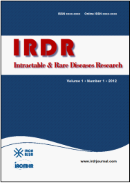Drug Discov Ther. 2023;17(4):279-288. (DOI: 10.5582/ddt.2023.01029)
A single dose of ketamine relieves fentanyl-induced-hyperalgesia by reducing inflammation initiated by the TLR4/NF-κB pathway in rat spinal cord neurons
Zhou X, Li QY, Luo QH, Wang L, Chen JX, Xiong Y, Wu GY, Chang L, Liu PP, Shu HH
A large amount of clinical evidence has revealed that ketamine can relieve fentanyl-induced hyperalgesia. However, the underlying mechanism is still unclear. In the current study, a single dose of ketamine (5 mg/kg or 10 mg/kg), TAK-242 (3 mg/kg), or saline was intraperitoneally injected into rats 15 min before four subcutaneous injections of fentanyl. Results revealed that pre-administration of ketamine alleviated fentanyl-induced hyperalgesia according to hind paw-pressure and pawwithdrawal tests. High-dose ketamine can reverse the expression of toll-like receptor-dimer (d-TLR4), phospho- nuclear factor kappa-B (p-NF-κB, p-p65), cyclooxygenase-2 (COX-2), interleukin-1β (IL-1β), and tumor necrosis factor-α (TNF-α) 1 d after fentanyl injection in the spinal cord. Moreover, fentanylinduced- hyperalgesia and changes in the expression of the aforementioned proteins can be attenuated by TAK-242, an inhibitor of TLR4, as well as ketamine. Importantly, TLR4, p-p65, COX-2, and IL- 1β were expressed in neurons but not in glial cells in the spinal cord 1 d after fentanyl injection. In conclusion, results suggested that a single dose of ketamine can relieve fentanyl-induced-hyperalgesia via the TLR4/NF-κB pathway in spinal cord neurons.







